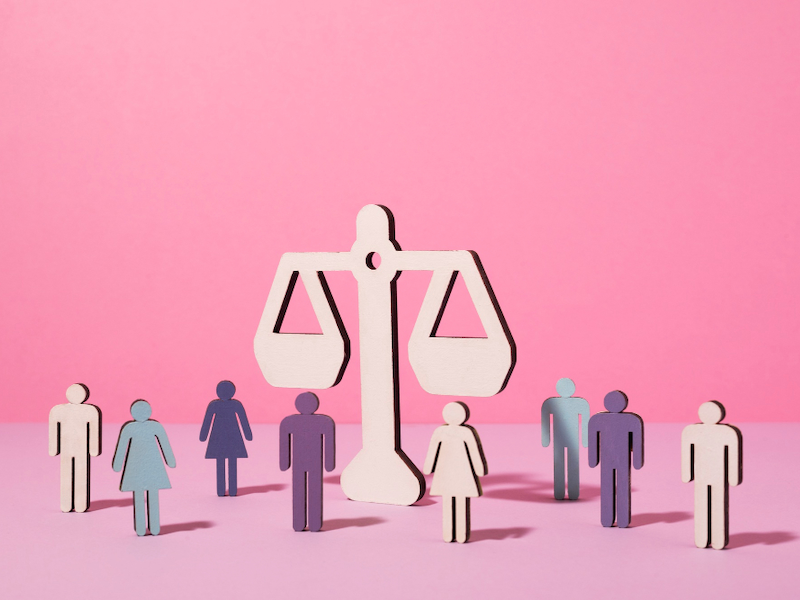
Article by Meena Chander, founder of Events Together and the This is Us conference.
The term discrimination refers to the mistreatment of individuals based on prejudices regarding their attributes, beliefs, and culture, including age, race, disability, gender, sexual orientation, religion, and nationality.
Discrimination is a serious matter, and it can have a detrimental effect on an employee’s mental well-being and self-esteem, and in some cases, it may even hinder their career progression.
To tackle this, discrimination in the workplace must be dealt with promptly and in a professional manner. This article will discuss the ways in which incidents of discrimination can occur, and how to efficiently address and eliminate these occurrences.
Types of discrimination in the workplace
The most obvious type of discrimination is known as ‘direct discrimination’, which is when a person is treated less favourably because of a social construct, such as their sexuality, ethnicity or gender. Direct discrimination can manifest itself in the workplace through various channels. For instance, if a woman misses out on a well-deserved promotion and their less qualified male counterpart secures the job, this can be deemed as a form of direct discrimination.
Indirect discrimination, on the other hand, is concerned with acts and policies that put certain individuals at a disadvantage. For example, if a dress fitting shop exclusively only hired females on the basis that male shop assistants may make female customers feel uncomfortable during fittings, then this policy would be exclusionary and be considered as indirect discrimination against males.
In most cases, indirect discrimination is not meant to be intentional however, these policies are still exclusionary.
Other forms of discrimination include harassment, which can consist of:
- Derogatory remarks regarding a person based on their individual identifiers
- Creating a hostile working environment
- Unwanted sexual advances
These types of discrimination are perhaps the most troubling and obvious forms, but there are ways in which the workplace can eradicate them immediately:
Have a strict anti-discriminatory policy
It’s a UK legal requirement to have in place an anti-discriminatory policy, that defines the different forms of discrimination, sets out roles and responsibilities and explains the consequences of discrimination.
If a discriminatory incident occurs, the anti-discriminatory policy will provide a clear framework that HR professionals can follow to efficiently deal with the situation. As a result, the discriminated party can feel satisfied that the occurrence has been dealt with promptly and professionally.
Prevent recruitment bias
Recruitment bias refers to when a recruiter develops an opinion about a potential hire due to characteristics such as their name, birthplace, or other factors. One example of recruitment bias is where a recruiter feels less inclined to hire someone based on social compatibility, where they would not socialise with the potential hire, outside of work. These types of attitudes can be detrimental when it comes to recruiting a diverse workforce.
The best way to eliminate recruitment bias is to create diversity within the HR department, as a diverse team ensures visibility and relatability when recruiting new hirers.
Another good resource for recruitment is to utilise D&I media to headhunt talent from underrepresented groups. This not only ensures that the company’s talent pool is inclusive of people from various backgrounds, but can also help to minimise discrimination company-wide.
Review training policies
Using training polices are a way of instilling information into employees and providing them with the necessary skills to ensure they work well with their colleagues. Diversity training should be an integral part of any company training programme as it can help to eradicate unconscious bias, and prejudice that an employee may have before they start their new job. Diversity training is also essential for those who work in managerial positions – eradicating any unconscious bias from management, which could negatively impact employees’ performance and well-being.
Have a HR point of contact
If an incident does occur, it is essential that every employee has a point of contact within the HR department so that they can express any concerns and report any incidents that may have occurred. HR provides a point of safety for all employees and follows a clear framework to investigate and deal with discriminatory incidents promptly.
Maintaining a strong HR department can also work as a deterrent and lessen incidents of harassment. One way to do this is to employ a diversity and inclusion advisor who would be able to provide internal insight into policies and practices to ensure they are not discriminatory.
Attend events
D& I events are a fantastic way to expose staff to a range of concepts and keep them up to date with the latest news and insights from the industry. Events can play an important role in networking and give a team an opportunity to meet a diverse range of industry professionals and people from all backgrounds, which can inspire new company practices, fresh ways of thinking and much more.
Conclusion
These steps are relatively simple; however, they can make a significant difference when it comes to tackling workplace discrimination. Not only should they eliminate incidents of discrimination, but this framework also works towards ensuring all team members are happy and thriving.








